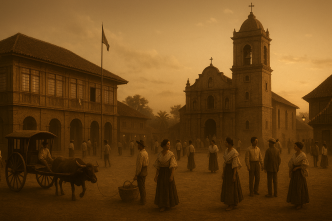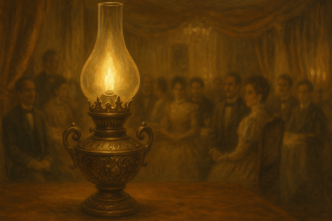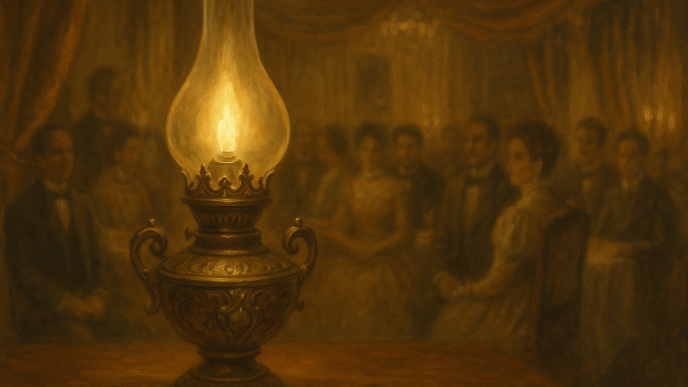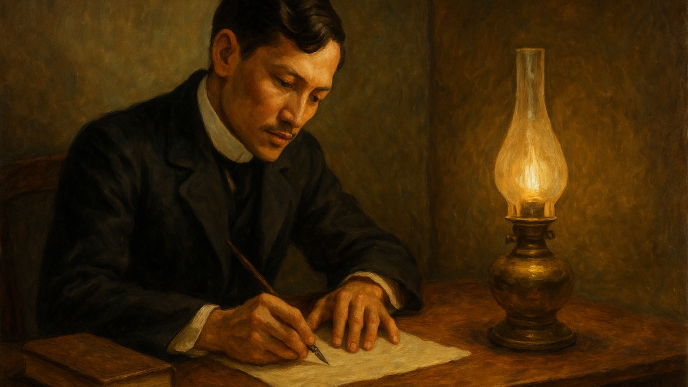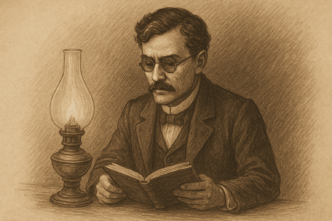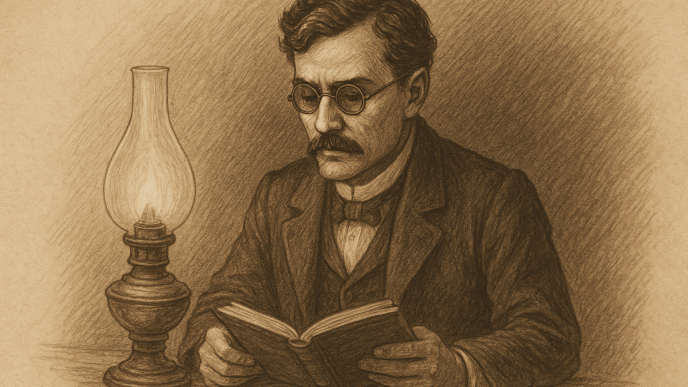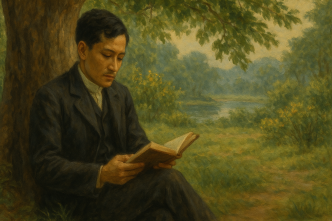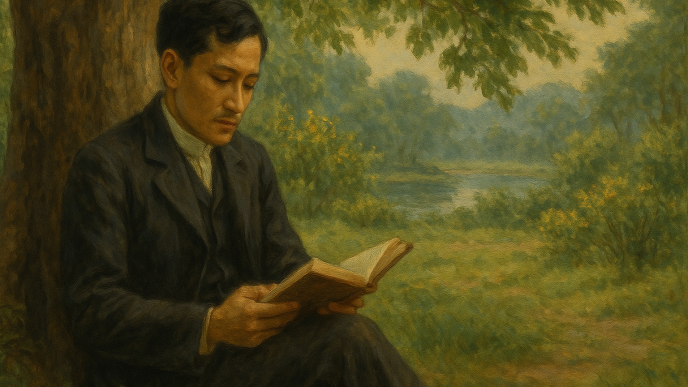Quick Summary
Noli Me Tangere is Rizal’s bold and unsettling portrait of Philippine society under Spanish rule. Through its characters, satire, romantic tragedy, and unflinching social criticism, the novel exposes the abuses of colonial power while planting the intellectual seeds of Filipino nationalism.
Introduction: The Novel That Awakened a Nation
Published in 1887, Noli Me Tangere marked the beginning of a new era for the Filipino people. The title, a Latin phrase meaning “Touch Me Not,” symbolized a social cancer so sensitive and festering that colonial authorities refused to acknowledge it.
More than a literary work, the novel was a mirror that reflected the moral, political, and social conditions of the Philippines under Spanish colonialism. It was the first Filipino novel that dared to name the sickness: a system built on clerical abuse, racial hierarchy, and bureaucratic cruelty.
Rizal wrote the Noli in Europe, far from home, yet the novel pulses with homesickness, outrage, and love for his country. Rizal sought to enlighten, not merely to entertain. His goal was to shock Filipinos into recognizing their reality and Europeans into seeing the injustices committed in their name.
Noli Me Tangere is therefore a novel of diagnosis. It names the disease, describes its symptoms, and challenges the conscience of its readers.
A Portrait of Colonial Society: Tenderness and Cruelty Intertwined
The emotional power of the Noli comes from its ability to juxtapose beauty and brutality. Rizal surrounds the reader with the gentleness of provincial life — family gatherings, fiestas, and romance — only to reveal the structural violence beneath these familiar scenes.
The novel unveils a world where:
- The friars control both church and state
- The educated indio is humiliated at every turn
- Justice is reserved for the wealthy
- The poor suffer without recourse
Rizal’s narrative strips away the veneer of civility to show the colonial system’s corrosive impact on Filipino identity, dignity, and social cohesion.
Ibarra and the Burden of Enlightened Reform
Crisóstomo Ibarra stands at the center of the story as a returning expatriate, educated in Europe, full of hope and plans for modern schools and social progress. His idealism represents the aspirations of the ilustrado class: to uplift the nation through peaceful reform, education, and cooperation.
But Ibarra’s journey becomes a tragedy of disillusionment. Every attempt he makes is undermined by fear, prejudice, and the machinations of friars like Padre Dámaso. He learns that goodwill alone cannot overcome a system designed to maintain power rather than promote progress.
Ibarra becomes the embodiment of the educated Filipino struggling against systemic oppression — a theme Rizal would later darken in El Filibusterismo.
The Friars: Faces of Religious and Political Power
Rizal’s portrayal of the friars remains one of the most controversial elements of the Noli. Characters such as Padre Dámaso and Padre Salví represent different forms of clerical abuse:
Padre Dámaso: Arrogant, hypocritical, loud, and deeply racist
Padre Salví: Cunning, manipulative, and predatory, hiding cruelty beneath quiet piety
Though fictional, they stand in for the very real abuses committed by the friar orders. Rizal never condemns the Catholic faith itself; rather, he exposes how a system of unaccountable religious power can corrupt both spirit and society.
The friars hold:
- Control over education
- Influence over politics
- Dominance over economic resources
- Command over morality
The Noli invites readers to question not spirituality but the institutions that distort it.
María Clara: Idealized Womanhood and the Tragedy of Powerlessness
María Clara is often reduced to the image of the “ideal Filipina”—demure, gentle, and pious. But she is also a victim of forces beyond her control: patriarchy, colonial power, and social expectation.
Her fate is a tragic commentary on the status of women in colonial society:
- She is denied agency over her own future.
- Her life is controlled by her supposed protectors—fathers, priests, and suitors.
- Her romantic destiny is sacrificed to political and social pressures.
The revelation of her true parentage exposes one of the book’s most chilling truths: the friars’ domination extends even to the intimate spaces of Filipino families.
Sisa, Crispín, Basilio: The Suffering of the Poor
If Ibarra represents the ilustrados, Sisa and her sons Basilio and Crispín represent the poor—those crushed not just by the system but by daily survival.
Sisa’s descent into madness is one of Philippine literature’s most haunting scenes. Her story shows how injustice is not only political but deeply personal. Her sons’ fate exposes:
- The cruelty of local authorities
- The vulnerability of children
- The indifference of the system to the powerless
Their suffering becomes the emotional core of the Noli, grounding its critique in real human pain.
Satire as a Weapon: Exposing Hypocrisy and Absurdity
Rizal’s use of satire is sharp, humorous, and devastating. Characters such as:
- Doña Victorina, obsessed with whitening her skin and abandoning her Filipino identity
- Doña Consolación, the vulgar, abusive wife of the alférez
- The pretentious town officials, who bungle processions and misuse power
These figures reveal the comical yet tragic social consequences of colonialism: self-hatred, imitation, and misplaced pride.
Rizal uses humor not as escape but as a mirror, reminding Filipinos to recognize their own follies in the shadow of oppression.
Education, Identity, and the Battle for Consciousness
A central argument of Noli Me Tangere is that national liberation begins with consciousness. Rizal saw education as the antidote to ignorance, bigotry, and tyranny.
But he also understood that education could be weaponized. The colonial school system rewarded obedience and punished independent thought. The novel shows how the struggle for Filipino identity begins with reclaiming the right to think freely and understand one’s own history.
The Noli is itself an educational tool—its greatest contribution to Philippine freedom is the awakening of the Filipino mind.
The Ending: From Illusion to Awakening
The novel’s closing events dismantle the illusion of gentle reform. Ibarra’s dreams crumble. Innocent lives suffer. María Clara withdraws into the convent. Sisa dies in despair.
These outcomes leave the reader with a profound sense of injustice. Yet this very injustice becomes the spark for awakening. The novel is not a call to arms but a call to awareness. The real explosion happens in the reader’s conscience.
Rizal ends the Noli by insisting that a nation cannot heal until it confronts the truth of its suffering.
Why Noli Me Tangere Still Matters
The questions Rizal posed remain pressing today:
- Who holds power, and how is it abused?
- How do social systems shape identity and opportunity?
- What is the cost of silence in the face of injustice?
- How can education empower citizens?
Noli Me Tangere continues to resonate because it speaks to universal struggles against oppression, inequality, and moral decay.
It is not only a colonial novel — it is a contemporary mirror. Filipinos still return to it because Rizal’s insights remain painfully relevant in a world grappling with corruption, disinformation, class divides, and the search for national dignity.
Ultimately, the novel endures because it does what great literature must do: illuminate the human condition while challenging readers to imagine something better.
